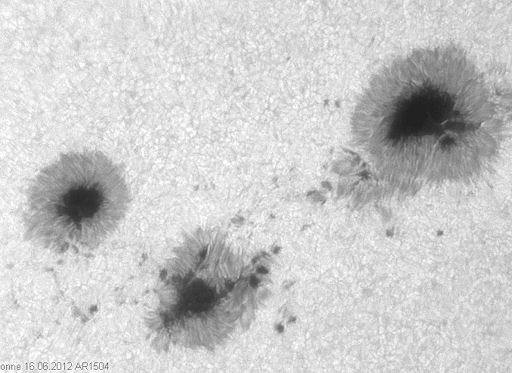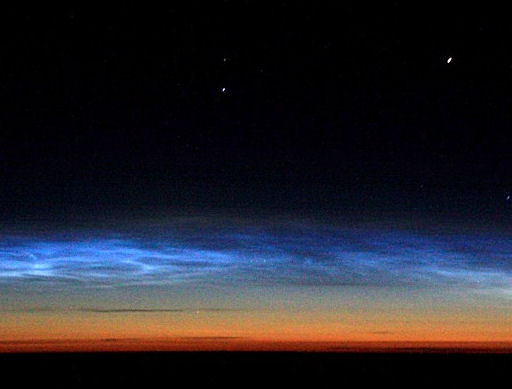WEAK IMPACT: As expected, an interplanetary shock wave associated with the "double CME" of June 13-14 hit Earth's magnetic field today around 0900 UT. The impact was weak. The solar wind speed in the wake of the CME barely upticked to 400 km/s, and the impact did not trigger a geomagnetic storm.
CHANCE OF FLARES: Sunspot AR1504 has developed a 'beta-gamma-delta' magnetic field that harbors energy for strong solar flares--and the huge sunspot is directly facing Earth. Amateur astronomer Eric von der Heyden photographed the behemoth on June 16th from his backyard observatory in Mühltal-Traisa, Germany:
Each of the dark cores in the image is about twice the size of Earth. The sheer size of the complex makes it an easy target for backyard solar telescopes.
NOAA forecasters estimate a 65% chance of M-flares and a 5% chance of X-flares from AR1504 during the next 24 hours. X-flare alerts: text, voice.
Readers, please scan the Realtime Photo Gallery for constantly updated images of this sunspot plus a huge prominence which has popped up on the sun's western limb.
ELECTRIC-BLUE NOCTILUCENT CLOUDS: Data from NASA's AIM spacecraft show that noctilucent clouds (NLCs) are like a great "geophysical light bulb." Theyturn on every year in late spring, reaching almost full intensity over a period of no more than 5 to 10 days. News flash: The bulb is glowing. Flying photographer Brian Whittaker photographed these NLCs over Canada on June 13th:
"I was very happy to see my first noctilucent clouds of 2012," says Whittaker. "They were visible to the north for about 3 hours as we flew between Ottawa and Newfoundland at 35,000 feet."
These electric-blue clouds are hanging 85 km above Earth's surface, at the edge of space itself. Their origin is still largely a mystery; various theories associate them with space dust, rocket exhaust, global warming--or some mixture of the three. One thing is sure. They're baaack ... for the summer of 2012.
Observing tips: NLCs favor high latitudes, although they have been sighted as far south as Colorado and Virginia. Look west 30 to 60 minutes after sunset when the Sun has dipped 6o to 16o below the horizon. If you see luminous blue-white tendrils spreading across the sky, you may have spotted a noctilucent cloud.


